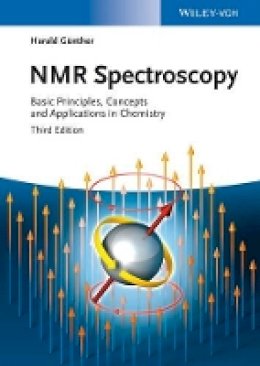9%OFF

Stock image for illustration purposes only - book cover, edition or condition may vary.
NMR Spectroscopy: Basic Principles, Concepts and Applications in Chemistry
Harald Günther
€ 81.78
€ 74.40
FREE Delivery in Ireland
Description for NMR Spectroscopy: Basic Principles, Concepts and Applications in Chemistry
Paperback. Nuclear magnetic resonance (NMR) spectroscopy is one of the most powerful and widely used techniques in chemical research for investigating structures and dynamics of molecules. Advanced methods can even be utilized for structure determinations of biopolymers, for example proteins or nucleic acids. Num Pages: 734 pages. BIC Classification: PNFS. Category: (P) Professional & Vocational. Dimension: 237 x 173 x 38. Weight in Grams: 1376.
Nuclear magnetic resonance (NMR) spectroscopy is one of the most powerful and widely used techniques in chemical research for investigating structures and dynamics of molecules. Advanced methods can even be utilized for structure determinations of biopolymers, for example proteins or nucleic acids. NMR is also used in medicine for magnetic resonance imaging (MRI). The method is based on spectral lines of different atomic nuclei that are excited when a strong magnetic field and a radiofrequency transmitter are applied. The method is very sensitive to the features of molecular structure because also the neighboring atoms influence the signals from individual nuclei and this is
important for determining the 3D-structure of molecules.
This new edition of the popular classic has a clear style and a highly practical, mostly non-mathematical approach. Many examples are taken from organic and organometallic chemistry, making this book an invaluable guide to undergraduate and graduate students of organic chemistry, biochemistry, spectroscopy or physical chemistry, and to researchers using this well-established and extremely important technique. Problems and solutions are included.
important for determining the 3D-structure of molecules.
This new edition of the popular classic has a clear style and a highly practical, mostly non-mathematical approach. Many examples are taken from organic and organometallic chemistry, making this book an invaluable guide to undergraduate and graduate students of organic chemistry, biochemistry, spectroscopy or physical chemistry, and to researchers using this well-established and extremely important technique. Problems and solutions are included.
Product Details
Format
Paperback
Publication date
2013
Publisher
Wiley-VCH Verlag GmbH Germany
Number of pages
734
Condition
New
Number of Pages
734
Place of Publication
Berlin, Germany
ISBN
9783527330003
SKU
V9783527330003
Shipping Time
Usually ships in 4 to 8 working days
Ref
99-2
About Harald Günther
Harald Gunther studied Chemistry at the Universities of Stuttgart and Heidelberg, Germany, followed by a Postdoctoral Fellowship at Mellon Institute, Pittsburgh, USA. He then became an assistant at the Institute of Organic Chemistry at the University of Cologne, Germany, where he also completed his habilitation. He became Professor of Organic Chemistry at the University of Cologne in 1970, and at the University of Siegen, Germany, in 1978.
Reviews for NMR Spectroscopy: Basic Principles, Concepts and Applications in Chemistry
“Few good textbooks on NMR Spectroscopy are available at either the undergraduate or graduate levels. For those who want to go beyond elementary organic chemistry but without delving into all the mathematics Friebolin’s book is probably the best among this category.” (Journal of Chemical Education, 5 June 2014)
